Just prior to its May 2018 opening, I was lucky enough to get a sneak peek at the Adirondack Experience, The Museum on Blue Mountain Lake's newest exhibit. It was four years in the making, and covers 19,000 square feet of exhibits, role-playing experiences, and multi-media engagement kiosks. They always do a wonderful job of helping visitors experience the unique features at the heart of this special place. This one is called "Life in the Adirondacks."
That is a big canvas to paint on. It is all about how people interacted with the Adirondacks over the centuries. There are so many wonderfully interactive features it is likely to make almost anyone feel like an Adirondacker... for a day.
How they played
The Adirondacks can be considered a "viral phenomenon," using the tools of the mid-19th century. The Hudson River School was an art movement of landscape painters who embraced Romanticism. They took steamboats up the Hudson River, and beyond, to paint the pristine nature they found there. Their work filtered past the fine arts into every corner of society, as illustrations, prints, and postcards. This led to people from philosophers and physicians to writers and poets making the same trip in search of contemplation and inspiration among the lovely lakes and rugged mountains.
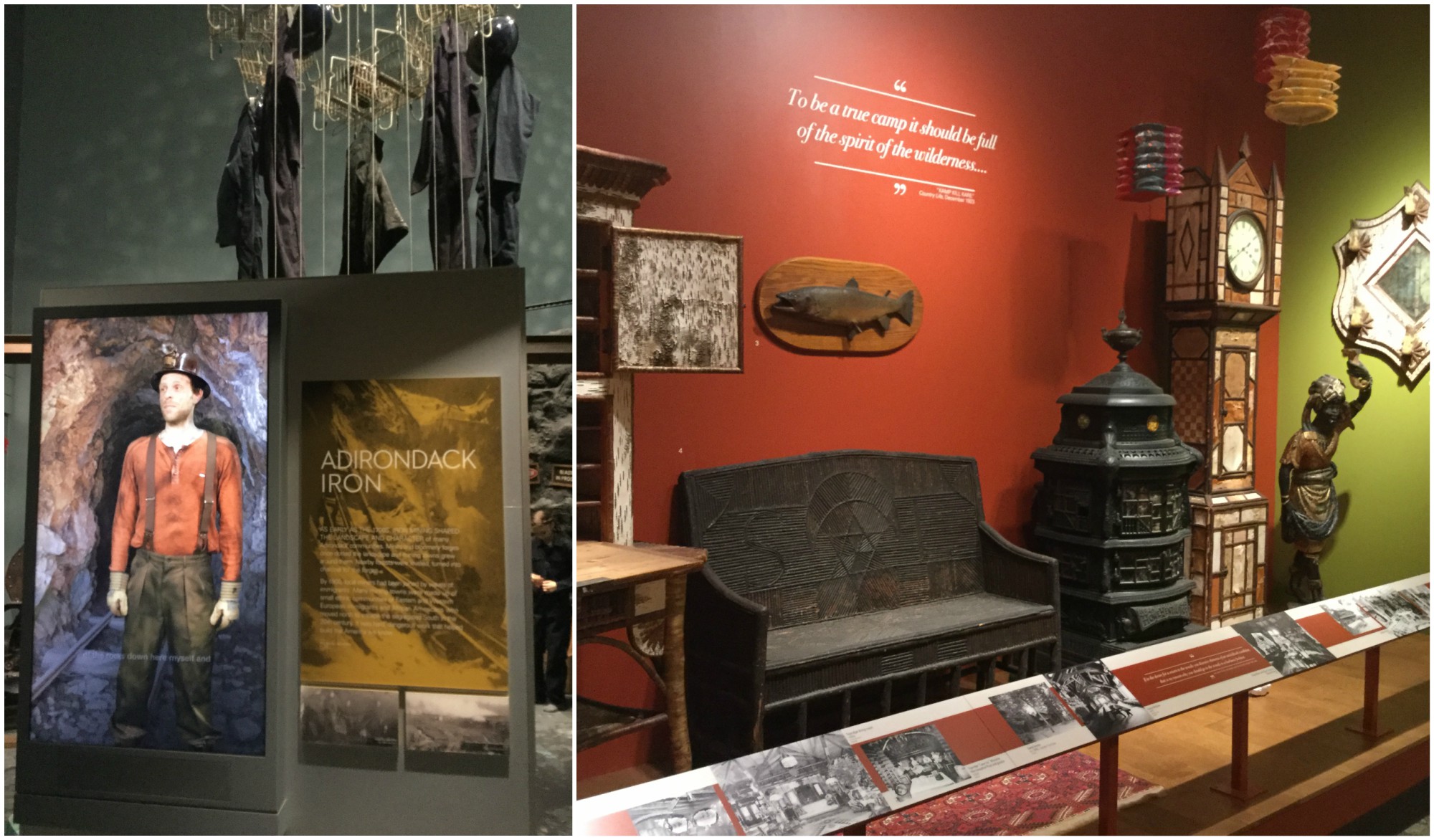
Then it became famous again through the Great Camps of the rich, who invited social friends, contemporary celebrities, and prominent leaders of the time to "play" in the wilderness, surrounded by great luxury. The press coverage inspired other social classes to make their own way to the refreshing cool air and blue waters, from board-floored tents and humble one room cabins to expansive resorts.
The Adirondacks were the source of great natural resources that further fueled the industrial revolution. High grade iron ore, tracts of timber, and abundant water power drew both workers and industrialists who made their own markers in its history.
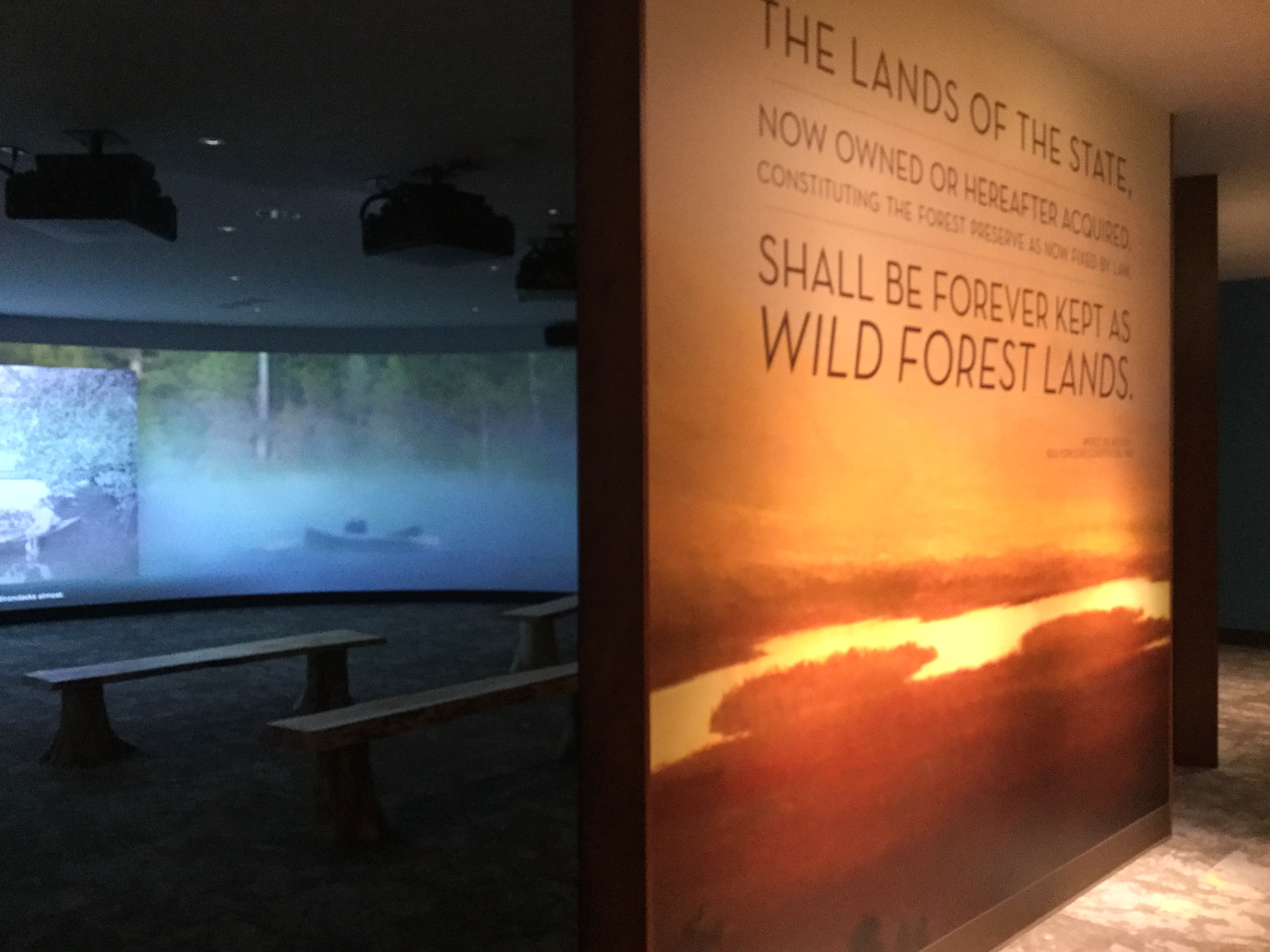
The first exhibit is designed to draw in people to watch a panoramic presentation that creates a context for everything you are about to see.
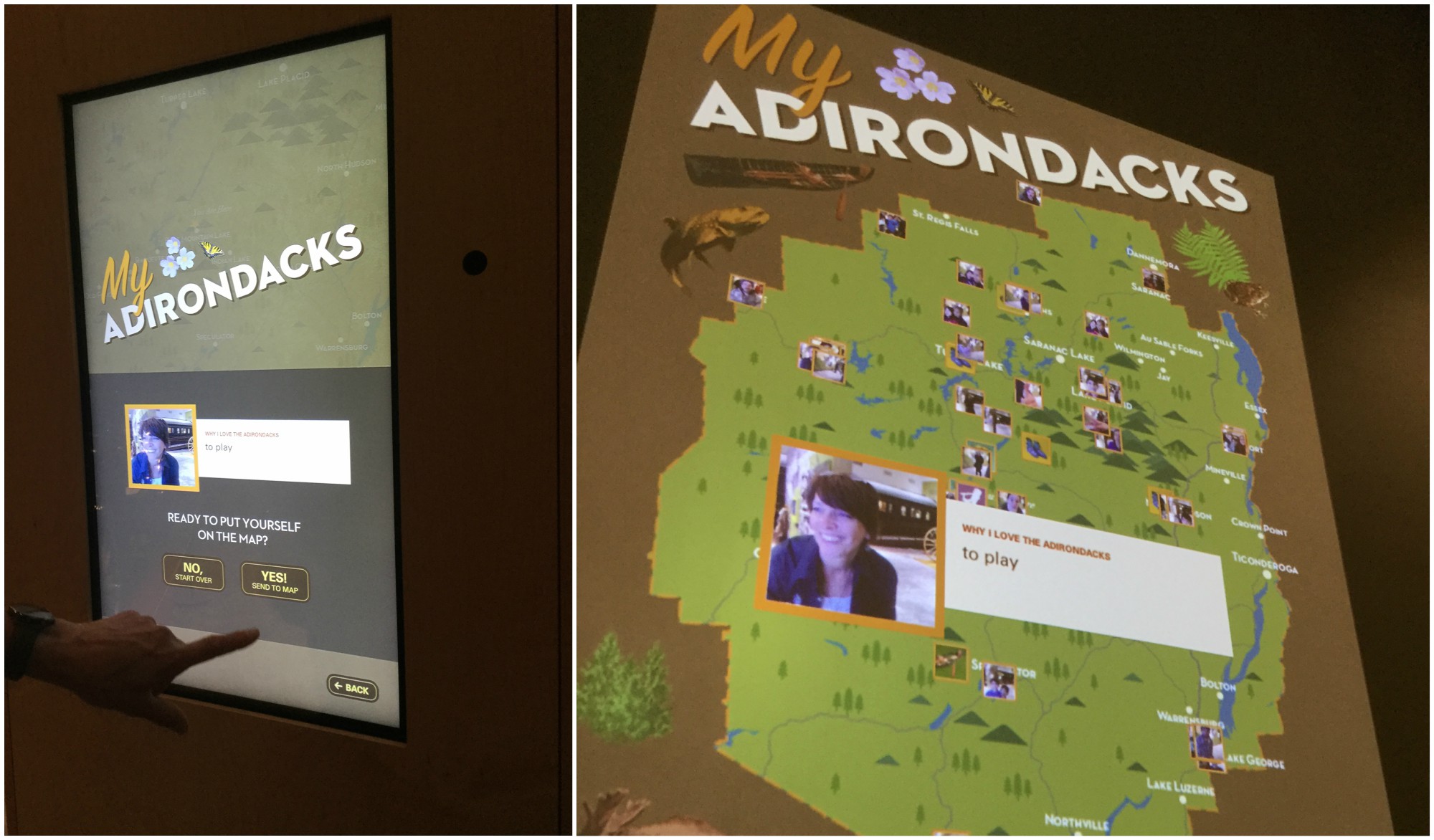
Write a message to a favorite place in the Adirondacks and see it nestle on the map. This will let others know favorite places.
How they worked
Through marriage, I am connected to the first European settlers here. When the stagecoaches came, my husband's ancestor was there, cooking giant meals at a stagecoach stop. Later, there would be diners for the car travelers, and shuttles to the hotels from the railroad stations.
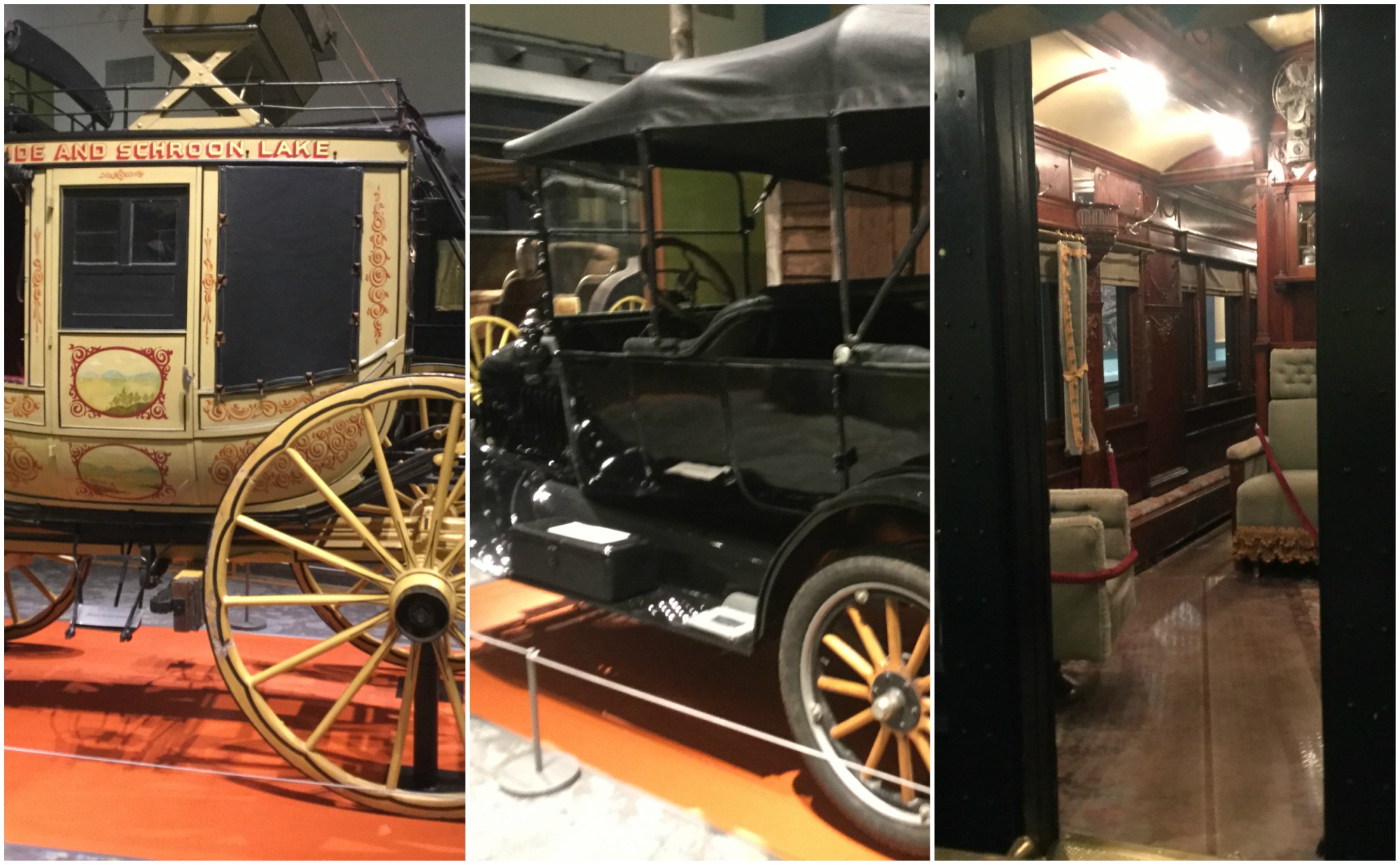
Before mechanical refrigeration, men worked in the Ice Trade, using horse-drawn sleds and handsaws to cut blocks of ice from the frozen lakes. They were packed in sawdust and sent south for use in "ice boxes."
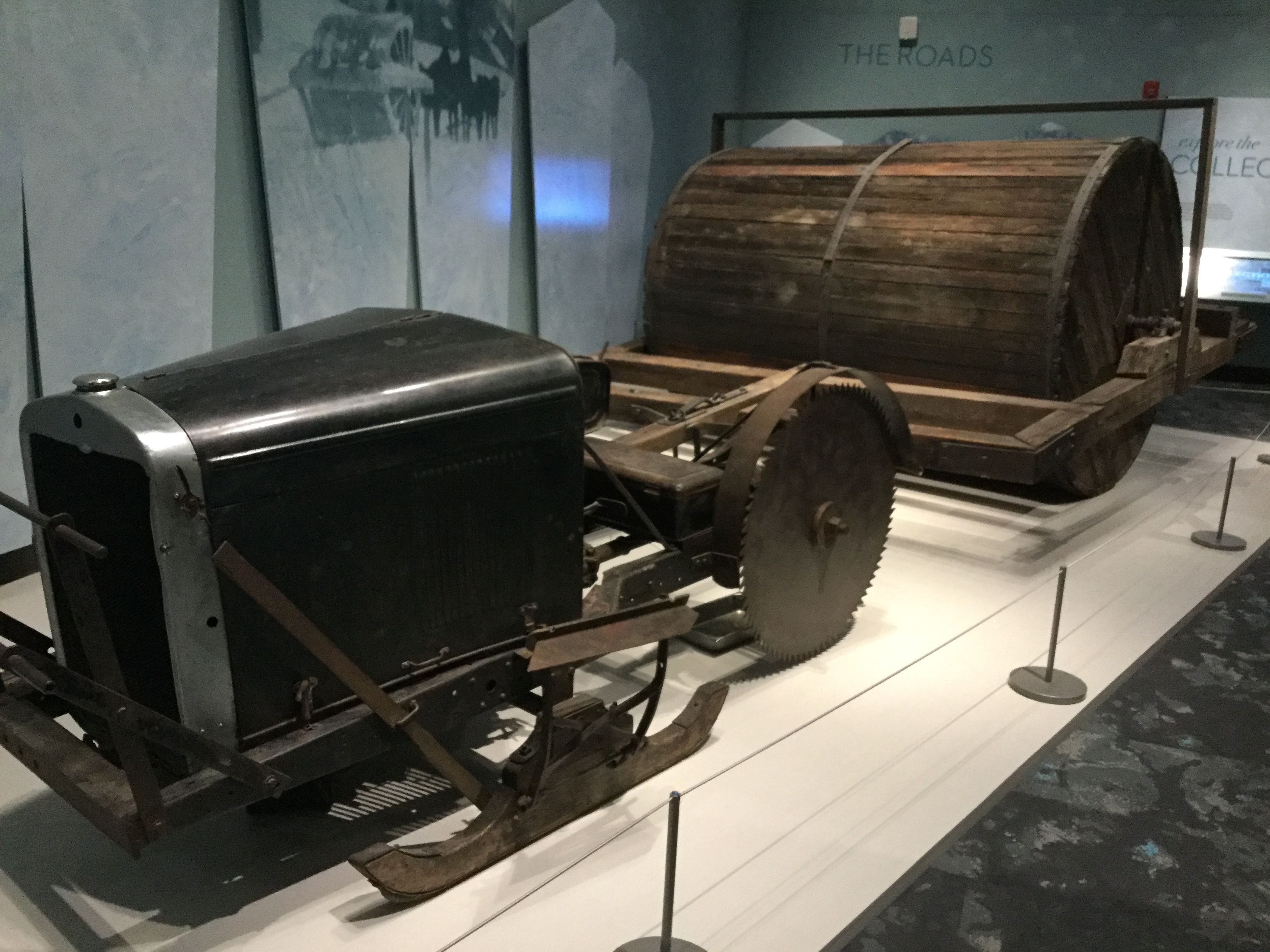
In summer, they were lumberjacks and river drivers. Here, my guide demonstrates how they balanced on logs and used poles to break up logjams.
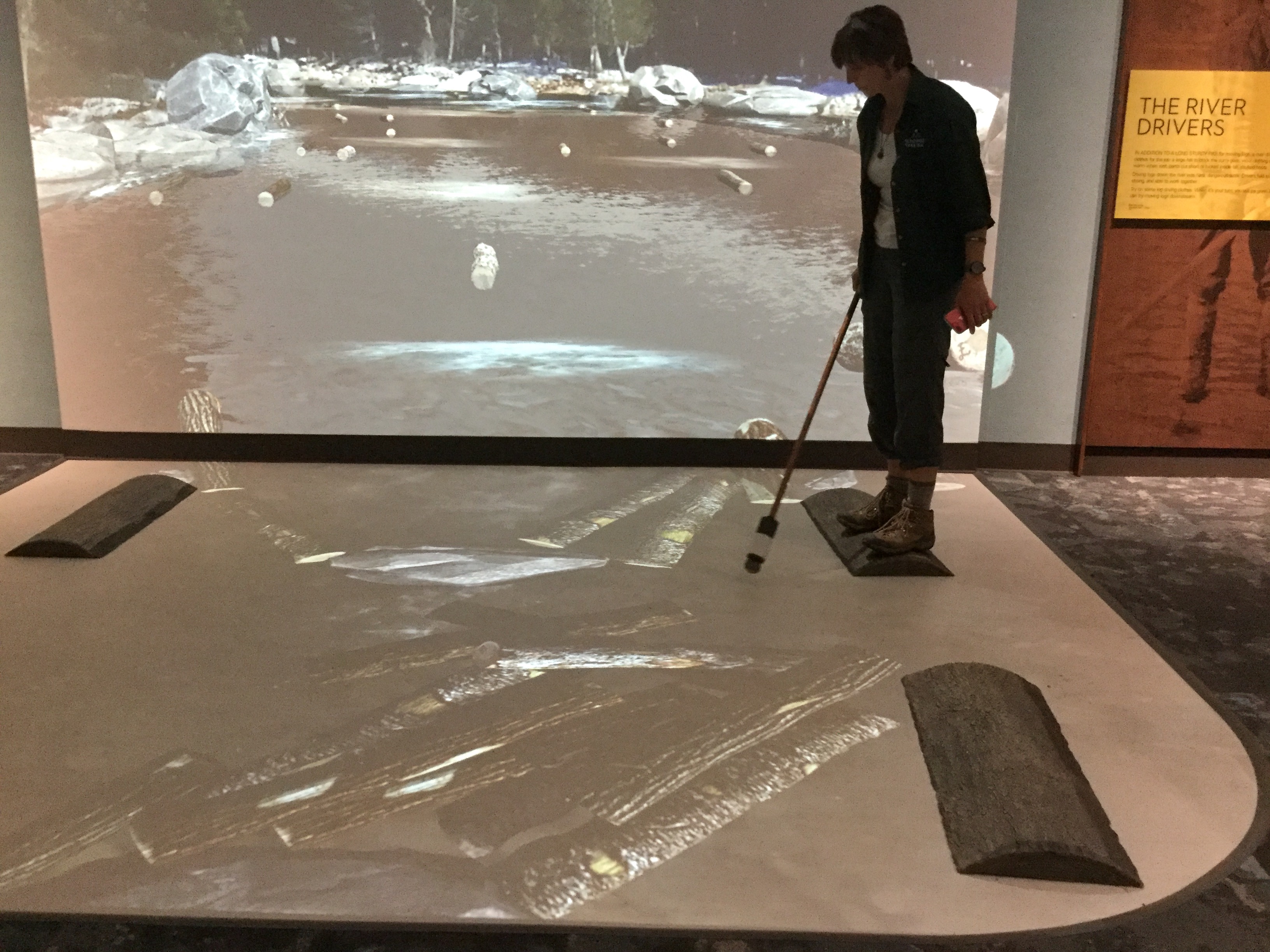
This interactive display is pretty real!
How they lived
I am also related by marriage to even earlier inhabitants of the Adirondacks. There is Native American heritage in his family, too. I loved to see this side celebrated in many displays of how the Native Americans hunted, farmed, and created their own tools.
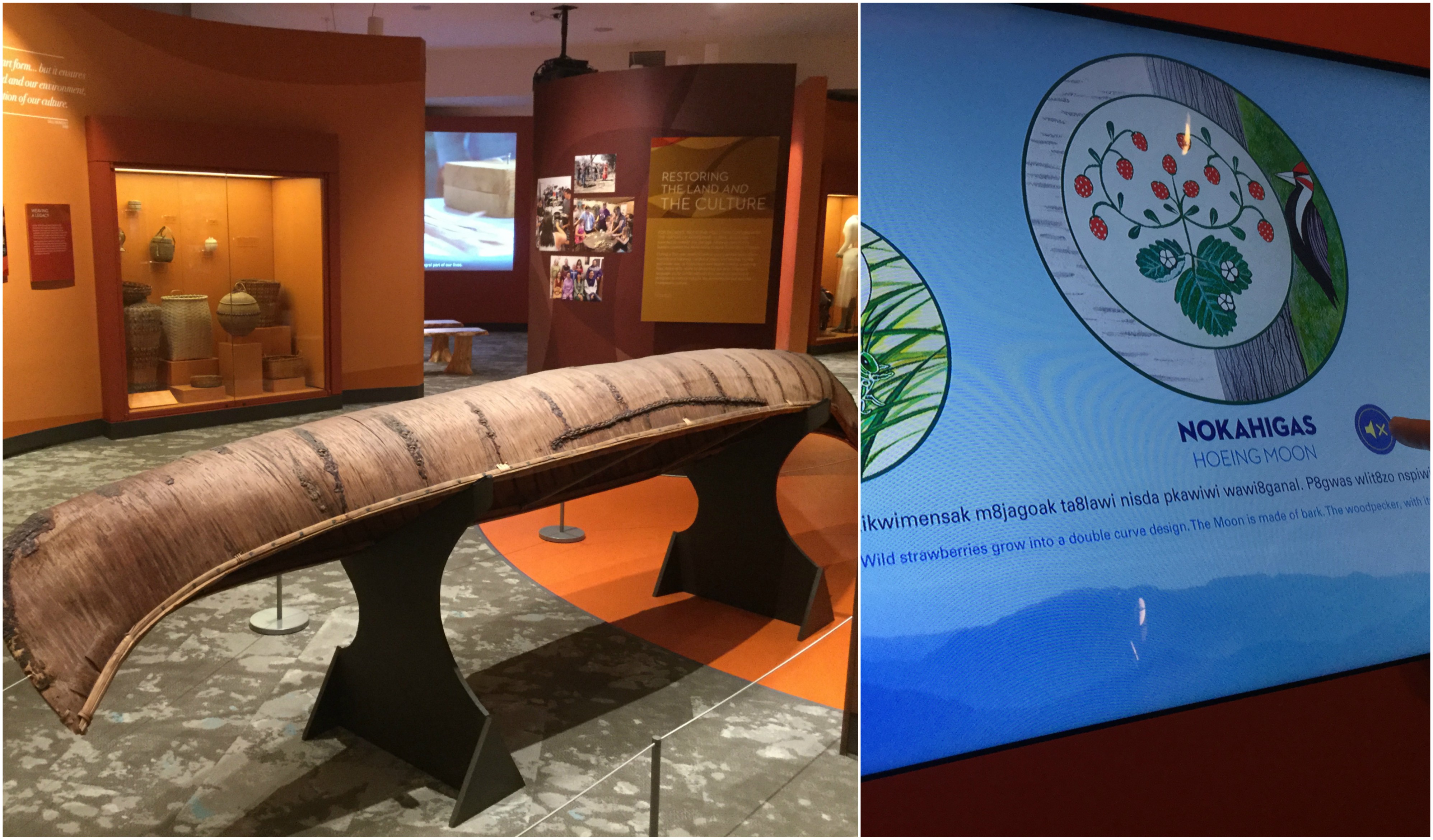
The Thirteen Moons display gives the names and symbolic meanings of the Akwesasne calendar.
Next door, the one-room cabin of Anne LaBastille was willed to the museum upon her death, and carefully moved to this display. Through her lectures, scientific papers, and 16 books, she was a champion of nature conservation.
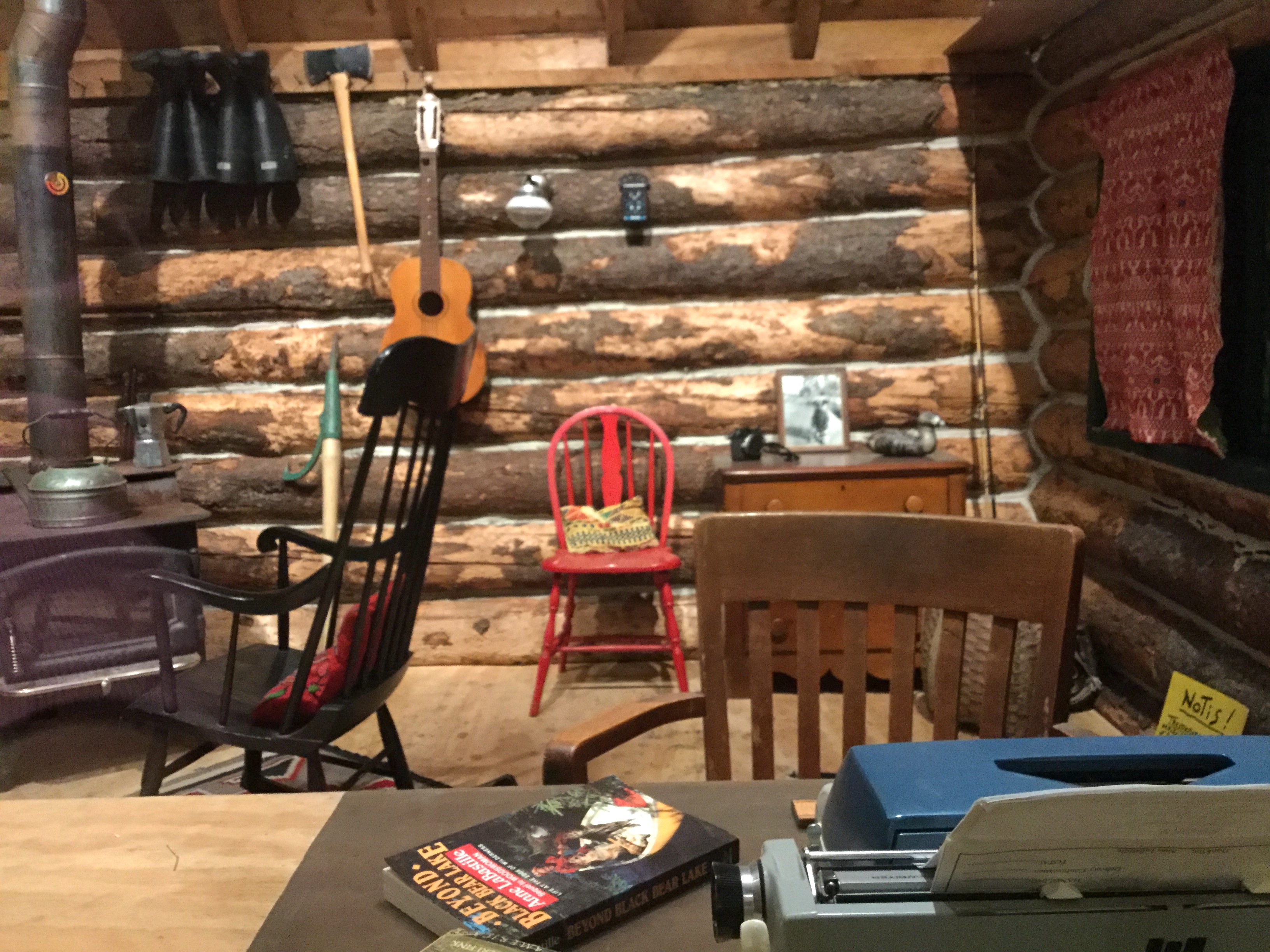
This is only a small bite of the banquet of fascinating subjects and hands-on experiences this new exhibit offers.
There are other indoor exhibits, as well as extensive outdoor activities. Climb the Whiteface Mountain fire tower, take the scenic trail to Minnow Pond, relax in the Rustic Gazebo, and hike the paths through the historic buildings like Sunset Cottage and Reising Schoolhouse.
This was an awe-inspiring visit to a complex that you can spend the whole day exploring. It will satisfy the child... in all of us.
Find a delightful place to stay. Work up an appetite for the dining. Consider our many attractions.





